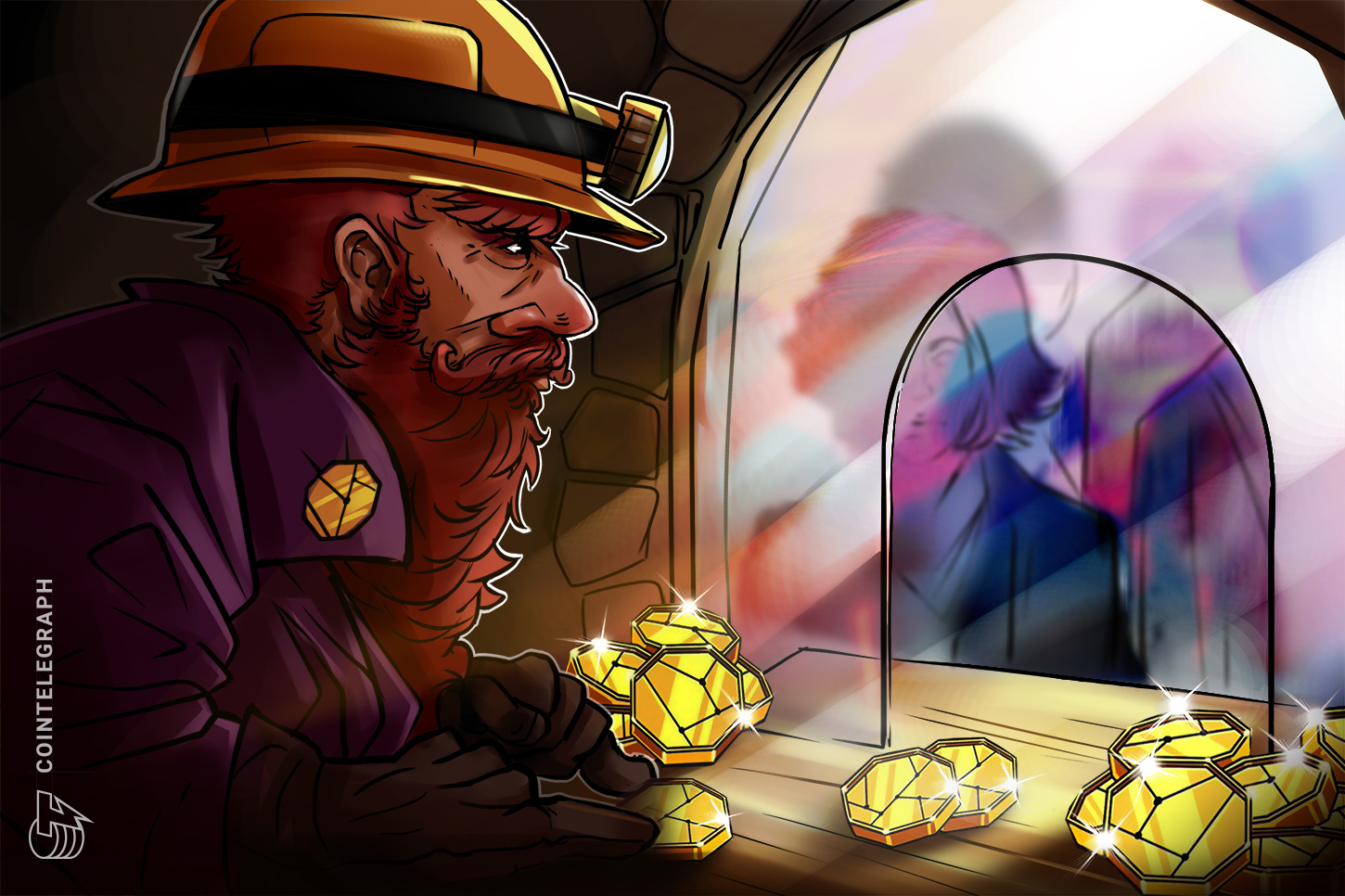
Considering investing in cryptocurrencies for the long run? Roth IRAs and other tax advantages investment vehicles are worth considering.
As the cryptocurrency market matures, more governments throughout the world introduce legislation to tax proceeds from crypto-related activities, with traders often triggering taxable events that can lead to future complications.
Avoiding paying taxes is illegal, but there are legal ways to dodge triggering taxable events while hodling onto one’s cryptocurrency holdings: Roth IRAs. These are individual retirement accounts (IRAs) with a special type of tax-advantaged system.
Using IRAs to avoid triggering taxable events with cryptocurrency investments is a strategy that has been considered for some time, with North American mining and hosting firm Compass Mining offering a solution for BTC users to mine directly to their IRAs last year.
Before diving deeper, it’s important to point out that Roth IRAs are only available in the United States, although other countries often have their own form of tax-advantaged investment vehicles. Often, stocks with significant exposure to Bitcoin — such as MicroStrategy — have to be used as a proxy for some of these vehicles.
What are Roth IRAs?
A Roth IRA is a type of individual retirement account to which investors contribute after-tax earnings. What makes Roth IRAs stand out is that what investors place in these savings accounts can grow tax-free and be withdrawn without any other taxes being owed after they’re aged 59 ½, if the account has been open for at least five years.
Essentially, a Roth IRA considers that since taxes have been paid on the funds being contributed into the account, investors do not need to pay any further tax as long as they meet the specific conditions outlined above.
Roth IRAs can be funded in various ways beyond regular contributions, which have to be made in cash. Assets permitted into Roth IRA accounts include stocks, exchange-traded funds, money market funds, bonds, mutual funds and cryptocurrencies.
The Internal Revenue Service (IRS) does not allow for direct cryptocurrency contributions into these accounts, but these are various Bitcoin IRA solutions that are designed for investors to save cryptocurrencies in these accounts. It’s worth pointing out that yearly contributions to Roth IRAs are limited based on IRS specifications and that investors can keep Roth IRAs as long as they please, as there are no required minimum distributions.
Is it a good idea to add crypto to a Roth IRA?
Cryptocurrencies are known for being extremely volatile, which means they aren’t for every investor out there. More conservative investors will likely be happier holding bonds, mutual funds and exchange-traded funds, while investors with a larger risk appetite may consider allocating to crypto.
The growth potential of cryptocurrency holdings in a portfolio is enough to lure in investors who believe cryptocurrencies will keep on growing in popularity as the infrastructure around them boosts accessibility and new crypto-related products and services are created. This growth potential, it’s worth pointing out, comes with heightened risk.
As tax-free withdrawals from Roth IRAs require accounts to be at least five years old, cryptocurrency investors looking to take advantage of them should always be prepared to hold onto their funds for a long time.
Chris Kline, co-founder of cryptocurrency IRA platform Bitcoin IRA, told Cointelegraph that there are no tax benefits on contributions to Roth IRA accounts, but there are tax benefits on distributions:
“If you have a longer time horizon in Bitcoin and crypto, a Roth IRA could be an appealing choice for those looking to take advantage of the long-term promise digital assets offer.”
To Kline, cryptocurrencies are going to “disrupt the very fabric of our everyday lives in ways like the internet disrupted communication and email disrupted the post office.” The co-founder of Bitcoin IRA added that while real estate and gold were premier examples of diversification in the past, crypto has “asserted itself as an alternative in the modern economy.”
Recent: The Metaverse is becoming a platform to unite fashion communities
Kline added that cryptocurrencies can offer an “alternative path forward for people of all ages” and that there’s been a surge in interest in investing in crypto assets for diversification.
Kunal Sawhney, CEO of equity research firm Kalkine Group, seems to disagree with Kline’s approach. Speaking to Cointelegraph, Sawhney said that if a person has “spent time and labour to earn money, it should ideally not go into extremely risky assets like cryptocurrencies.”
Otherwise, he added, it “defeats the idea of investing for retirement.” Sawhney cautioned that cryptocurrencies aren’t just Bitcoin (BTC) and that betting on these increases the risk that investors fall prey to Ponzi schemes.
As an investment category, he said, cryptocurrencies “might not be so bad” as these assets may become the “biggest contributor to the overall amount in the Roth IRA when the contributor retires and plans to withdraw.” Once again, their potential outsized performance is weighed against their risk.
For long-term investors expecting these outsized returns, placing cryptocurrencies in a Roth IRA lets them realize their capital gains without getting taxed, although they’ll have to stomach the ups and downs for a while.
Portfolio diversification
The extreme volatility of cryptocurrencies makes them a not-so-easy investment when talking about retirement, with the jury being out on whether including cryptocurrencies in a 401(k) retirement plan is sound financial planning or gambling with the future.
To Sawhney, investors need to have a pre-determined strategy for their Roth IRA. The CEO noted that a 60/40 portfolio, with greater exposure to stocks than to bonds, was “long considered balanced and financially rewarding” but suggested cryptocurrencies are changing things:
“Now that there is an option available to hold relatively the most volatile asset, cryptocurrency, a new strategy, say 50/40/10, might be considered. Here 10% could go to the new asset class comprising cryptos. Investors should have the option to change the allocation share per their risk appetite.”
Recent: Does the Ethereum Merge offer a new destination for institutional investors?
Due diligence, Sawhney concluded, is crucial as Roth IRAs are often “viewed as one of the best investment vehicles for young and low-income earners.”
Speaking to Cointelegraph, Kevin Maloney, interim CEO at crypto retirement account provider iTrustCapital, said that volatility is actually “one of the main reasons why many investors prefer using a Roth IRA or any other type of IRA to invest in crypto.” He added that even day-traders could benefit:
“For those who want to ‘day-trade’ due to the volatility of crypto, an IRA still represents a solid option because they won’t be paying yearly taxes on their gains so long as they aren’t taking distributions.”
Whether investors are looking to add cryptocurrencies to their Roth IRA accounts, it’s important note that crypto assets are only available for these accounts through custodians, which may charge hefty trading fees.
It’s up to every investor to analyze what type of investment vehicle best suits their situation and risk appetite. Roth IRAs may be extremely beneficial for long-term investors, as, since 2014, the IRS has taxed cryptocurrencies as property, and capital gains taxes can be owed on depreciated assets.
The views and opinions expressed do not necessarily reflect the views of Cointelegraph.com. Every investment and trading move involves risk, you should conduct your own research when making a decision.











